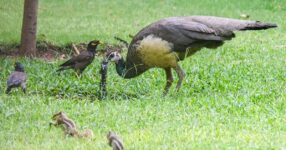
Status of garden city’s biodiversity
“There is a massive difference between the presence of green and blue spaces in the city and a healthy ecosystem. This report focuses on the latter,” says Monalisa Sen, co-author of the study and senior programme coordinator (Biodiversity), ICLEI.
The City Biodiversity Index (CBI) or Singapore Index, developed in 2008 and used in Bengaluru for the first time, shows that the city’s scores are below average in almost half of the indicators. The report analysed data for one year from April 2023. The findings were made public on September 9.
“This is the first round, so the scores provide an idea of what works and what does not. It could be a guide for improvements,” Sen says.
The report lists Bengaluru’s parks and the city’s flora and fauna. The information was sourced from scientific publications, government reports, white papers, and citizen science platforms like eBird and iNaturalist.
‘Garden City’ lacks tree cover
For long, Bengaluru has been called India’s ‘garden city’. However, the scattered, reducing green spaces, as seen in ICLEI’s Natural Assets Map, part of the report, show that this reputation might no longer hold.
Only about 13% of the core city’s total area of 717.13 sq km comes under natural, naturalised, and restored areas. The tree cover is just 14.7%, and the accessible tree cover is restricted to public green spaces, including parks like Cubbon Park, Lal Bagh and some reserve forests.
Most of the green spaces in the city are either inaccessible or partially accessible, as they are within institutional areas like university campuses and military and defence establishments, the report highlights. Some of these green spaces are poor in diversity.
“The lack of tree cover is very evident. Some gardens are lawns with no tree cover, so they don’t provide ecosystem service or benefits. The green cover map shows very low levels of greenery, which needs to be urgently addressed,” says Sen.
One problem green spaces face is the lack of native plant species compared to invasive alien species. The study identified 26 invasive species last year and 309 native species. “Even among the roadside trees, the native species are very few,” Sen points out.
The researchers call for a local study of invasive species and their risk assessment to understand their impact on local ecosystems.
Blue spaces at risk
This year’s summer hit people with the reality of the city’s acute water crisis. Some studies estimate that Bengaluru will run out of water by 2025. This doesn’t seem far-fetched, as a May 2024 report showed that 125 lakes in the city have dried up, and 25 more are at risk.
Sen points out that the concretisation of the city is a major factor in these woes. Most of the areas in Bruhat Bengaluru Mahanagara Palike (BBMP) limits are impervious, as drawn by ICLEI in the new report—through which water cannot pass. Importantly, data on permeable and non-permeable spaces at the city level is absent.
“We developed the permeable areas map for the report to show how few and scattered they are. They are not well connected. The natural spaces, whether blue or green, need to be connected for the fauna to flourish. Butterflies, moths, insects, and lizards move only when you have connected spaces,” Sen explains.
The researchers also found that construction is happening close to some lakes, and water is being taken from them. This stresses the ecosystems in a city facing water scarcity. Sen stated that such issues need to be looked into as a priority.



